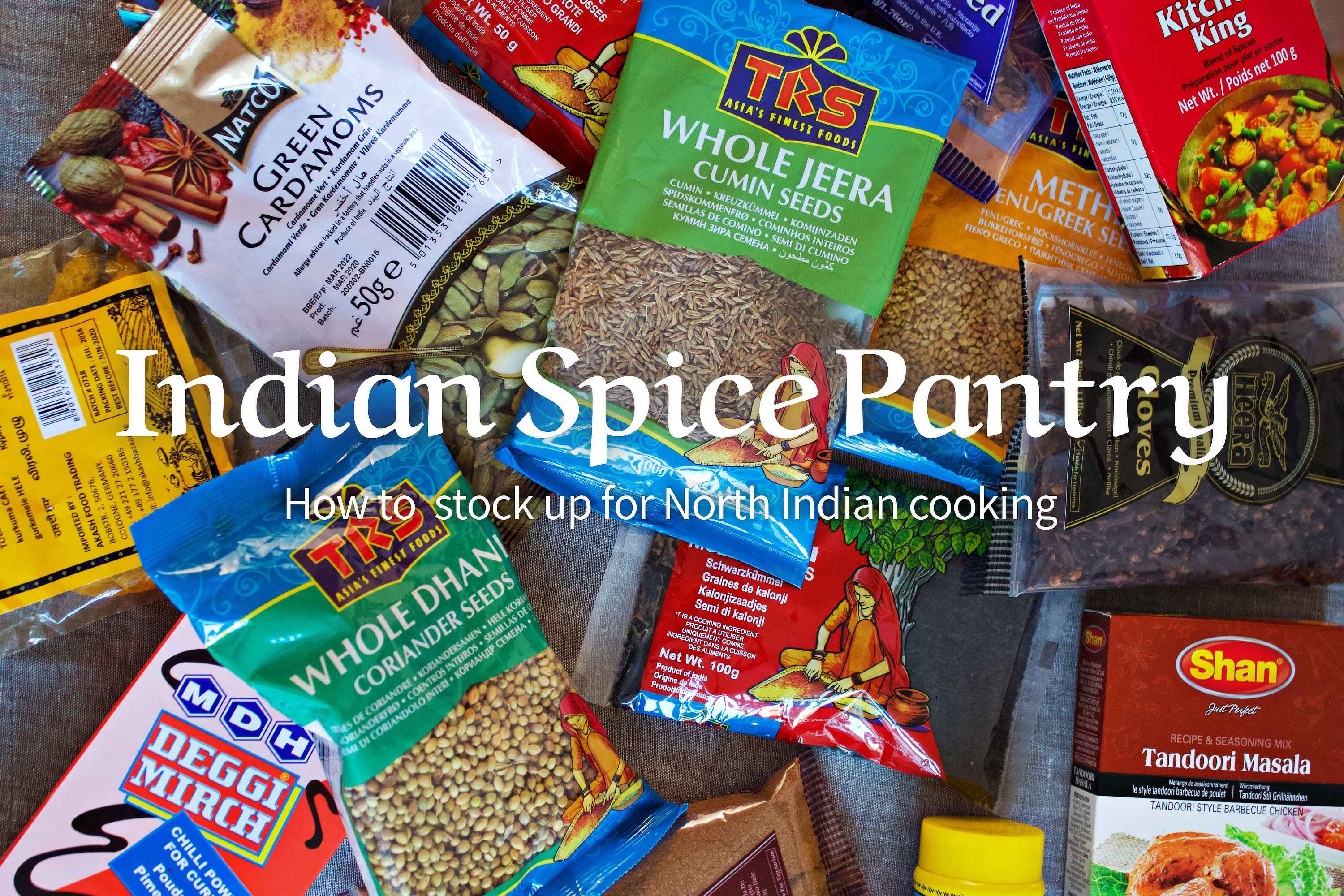
The word masala is quite interesting. In India, the word masala refers to spices this could be whole spices or dry roasted spice blends. But it doesn't stop there, we also refer to spice pastes as masalas. This could be a reduction of ginger, garlic, onions, and tomatoes cooked with other spices used to flavour a curry or spiced mashed potatoes used as a filling for paranthas or samosas.
Spices dominate the floor when it comes to Indian cuisine. North Indian food especially isn't one of those cuisines where you could easily plate up a three ingredient dish. A lot goes into our curries, vegetable and rice dishes. We enjoy a complexity of flavours in our food.
Why do we use so many spices?
In addition to adding the complexity of flavour and aroma to dishes, spices also prevent rotting of food. They slow down the growth of bacteria and aid in preservation.
Goodbye Curry Powder, hello Garam Masala
Okay, let's straighten this out right in the beginning. We don't use "Curry Powder" in Indian cooking. It's a British adaptation of Indian spice blends which is now commonly available in supermarket aisles across the Western world. I will not spend time ranting about how "Curry Powder" is my nemesis but say that if you are interested in cooking Indian food, rather look for "Garam Masala" instead. Keep your hands off that "Curry Powder" unless you're making Curry Wurst.
Garam Masala is a spice blend consisting of body warming spices, hence the term Garam (warm/hot) Masala (spice). More on that below.
If you are new to cooking Indian food, one very important piece of advice I have for you is to buy your spices from a South Asian store. Your supermarket may stock some cumin, chili powder and may even sell some version of Garam Masala, however, I do strongly recommend that you make that extra trip to stock up on spices from an Indian or Pakistani store. I have noticed significant differences in cumin, cinnamon, and other spices they sell at standard supermarkets here in Germany vs. the same spices from the Indian store.
Storing Spices
I usually like to store most of my spices whole and make smaller batches of spice mixes and blends. This is because blended spices tend to lose their flavour and aroma faster. Once you buy a pack of Garam Masala from the Indian store, to make the most of it, I recommend that you take it out of its packaging and put it in an airtight jar.
Keep your spices sealed to ensure that their aroma oils stay intact and don't evaporate over time.
Whole Spice vs. Spice Blends
Last piece of advice before we start talking about spices specifically. As you may have figured already, we use a lot of spices in Indian cooking. Name a dish, and you can surely buy a spice mix specific for this dish. Now, do you need to stock pav bhaji masala, dal makhani masala, tandoori masala and so on for every Indian dish you choose to make? I would say, no.
I recommend investing in whole spices and grinding them fresh to make spice mixes for whatever dish you are making. It's more investment from both the cost and storage space perspective to begin with, but there are many advantages of this approach.
- Most spice mixes are blends of the same few spices in different proportions, so once you have these spices at hand (the intermediary and advanced spice list), you will be able to make custom spice blends for most Indian dishes.
- Blended or powdered spices lose their flavour over time, so if you're planning to cook a special Indian dish, why not invest that extra few minutes to toast and grind the spices fresh? You can easily toast whole spices in a pan and pound them in a mortar and pestle or in a blender. They don't have to be a perfectly fine powder like in the store. A coarsely ground masala is often preferred. It's called khada masala.
- More control over your ingredients: Making blends yourself will also help you to know exactly what's going into your food and leave out the anti-caking agents and preservatives added to packaged spice mixes. Plus, you can customise them based on what flavours you enjoy more.
- You can use these spices not just for Indian food but for a lot of other dishes as well. I am guessing you're here because you like to cook. Why not have cardamom in your pantry instead of just having a blend that contains cardamom. You can use that cardamom to enhance your banana bread or make Swedish cakes. Or you could use these spices to make Chinese five-spice powder. The options then are endless.
Now, do you need a plethora of spices to get started with Indian cooking?
Absolutely not.
I have structured the Indian pantry list in three levels of priority. These are only a guide in case you don't know where to start.
Here's what you need to get started, the bare minimum I recommend investing in, if you want to get started on Indian cooking. With this set of spices, you will be able to make different variations of dal, North Indian style vegetable stir fries or subzis of various sorts and some curries.
- Cumin seeds (jeera) - Kreuzkümmel
- Coriander seed powder (dhania powder) – gemahlener Koriander
- Red chilli powder (deggi mirch or Kashmiri mirch powder) – rotes Chilipulver
- Turmeric powder (haldi) - Kurkuma
- Hing (asafoetida) – Asant/Teufelsdreck
- Garam masala
If you are looking for something a little more advanced. With these ingredients in addition to those in the basic list, you will be able to make spice blends for various dishes.
- Dried fenugreek leaves (kasoori methi) - getrocknete Bockshornkleeblätter
- Indian bay leaves (tej patta) - indische Lorbeerblätter
- Green cardamom (choti elaichi) - Kardamom
- Black cardamom (badi elaichi) - Schwarzer Kardamom
- Cassia bark or Kerala cinnamon (dal cheeni) - Kassiazimt
- Cloves (laung) - Gewürznelke
- Black pepper (kali mirch) - Schwarzer Pfeffer
- Carom seeds (ajwain) - Ajowan/Königskümmel
- Black mustard seeds (rai) - schwarze Senfkörner
- Dried red chillies (sukhi lal mirch) - getrocknete rote Chilis
With these added ingredients, you will be able to make your own garam masala, sambar powder, panch phoran, chaat masala and will be able to make chaats, biryani and almost every dish you'd like to try.
- Nutmeg (jaiphal) - Muskatnuss
- Mace (javitri) - Muskatblüte
- Fenugreek seeds (methi dana) - Bockshornkleesamen
- Fennel seeds (sauf) - Fenchelsamen
- Nigella seeds (kalongi) - Schwarzkümmel
- Star anise (chakra phool) - Sternanis
- Dried mango powder (amchoor) - Mangopulver
- Black cumin seeds (kala jeera) - Schwarzkümmel
- Black salt (kala namak) - Schwarzsalz
- Saffron (kesar) - Safran
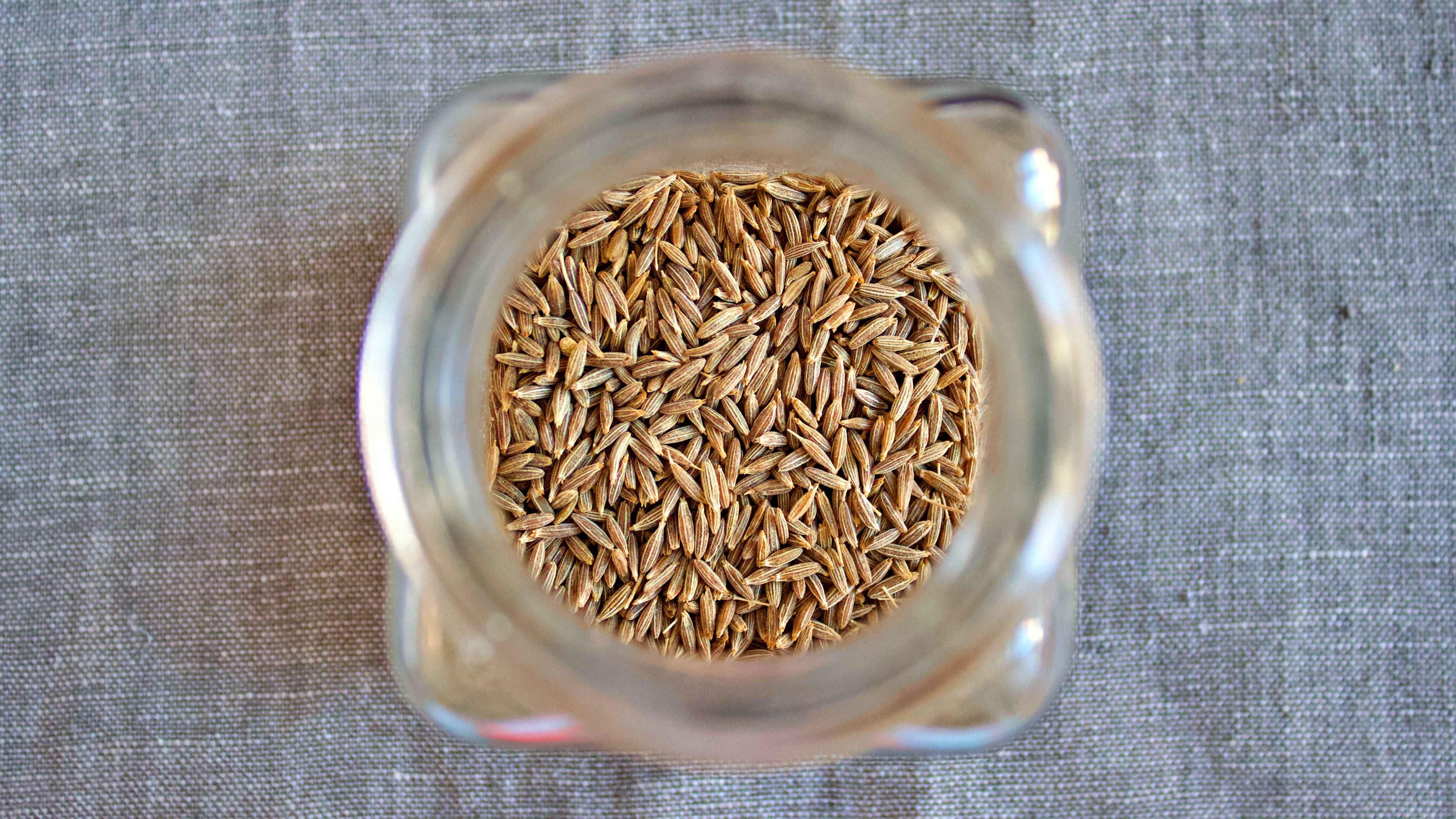
Cumin or jeera is used in different forms - seeds, powder, roasted powder or added to spice blends and pastes. It is one of the most essential everyday spices used in Indian cuisine.
A member of the Apiaceae family, cumin shares its roots with other fragrant flowering plants from the carrot, parsley and celery family producing seeds such as fennel, caraway, ajwain and anise amongst many others.
Apart from adding earthy and nutty flavours to our food, cumin is known to improve digestion and help against bloating, which is why, in Indian cuisine, it's often paired with lentils and beans which are often harder for the stomach to digest.
Due to its health benefits, many people in India start their day with a cup of jeera water (cumin boiled in water to make a cumin tea reduction). This is not only considered to be a tonic to aid digestion but also has perceived benefits from weight loss, anti-inflammation to various benefits for skin.
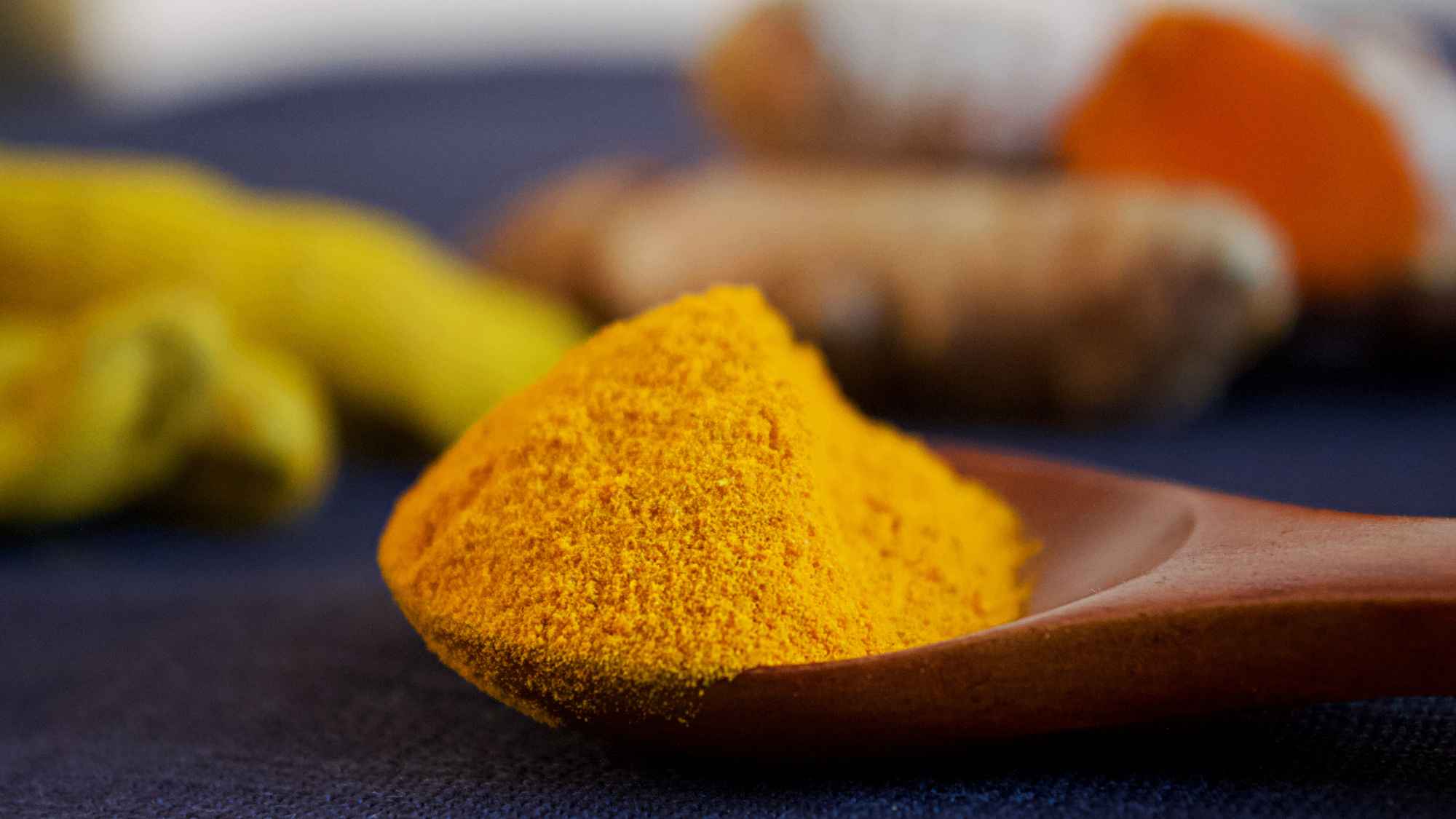
Turmeric or haldi is much more than a spice to the Indian subcontinent. We've been crazy about this stuff long before Starbucks started serving Turmeric Spiced Lattes. Turmeric has been long used in Ayurvedic medicine for thousands of years and plays an important role in Indian culture from the Haldi or Turmeric ceremony at weddings across the nation to being used in religious rituals and celebrations. It's also used as a fabric dye for saris and Buddhist monks’ robes.
In India, turmeric is known for its healing properties, often served to someone who is ill in a glass of warm milk or mixed with oil and applied directly to wounds and scabs. Turmeric also makes an appearance in beauty products, from homemade face masks to commercially sold creams, face washes and other products.
In our kitchens, turmeric imparts an earthy aroma and warmth to our dishes and gives them its bright golden yellow colour. There are various types of turmeric available in India.
In many homes, fresh turmeric roots are often sun-dried at home and freshly ground to make haldi powder. My mother packs me a home-ground batch to bring back home with me every visit. However, you can easily find turmeric powder in most grocery stores nowadays, and many organic stores also stock fresh turmeric. Indian grocers also often stock dried turmeric rhizomes that you can grind at home in a spice grinder. This way, you know exactly what's in your turmeric powder and know that it hasn't been adulterated with other chemicals.
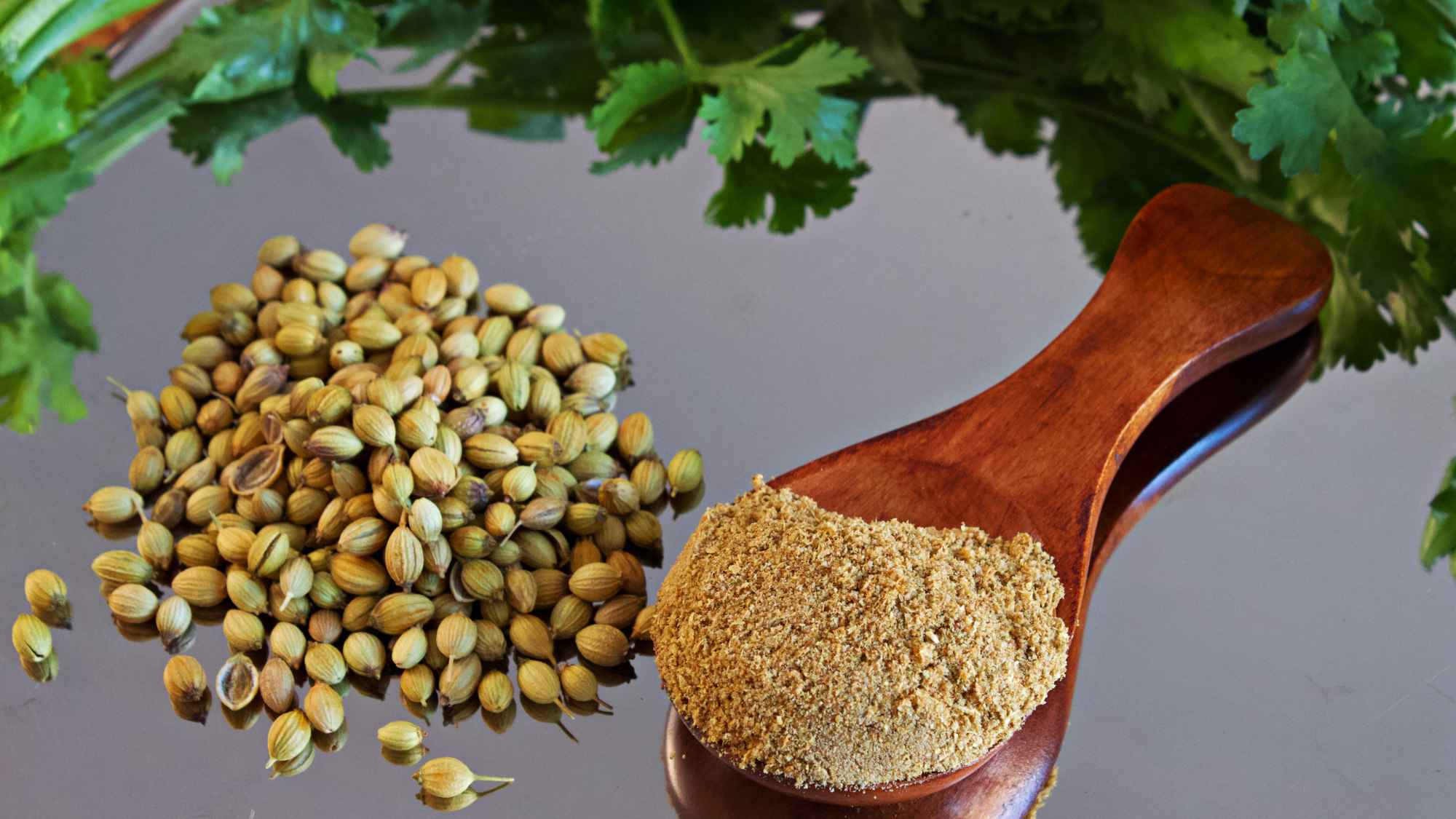
Coriander or dhaniya makes an appearance in the Indian kitchen in various forms.
Fresh coriander leaves are the quintessential garnish for most savoury Indian dishes. Curries and dals are often topped with a handful. It's added to chaat, samosa and parantha fillings and blended together in various chutneys or dipping sauces.
I often like to separate coriander leaves and stems when I add them to my dishes. I find that coriander stems are great flavouring agents. Like the coriander roots, they are much more fragrant than the leaves themselves and add a nice citrusy fresh aroma to food. Unlike the leaves which turn black when cooked too much, they hold their shape and thus can be simmered with curries and dals. Since the leaves are more tender, I always save them for last and use them as a garnish.
If you find your coriander bunch has its roots intact, don't toss them away. I recommend that you use them in spice pastes, stews or to flavour broths. They lend a lovely aroma to anything they are added to and, unlike coriander leaves, can also be frozen and used later.
Coriander leaves on the other hand are quite tender and need some love and care when storing them. Unlike parsley, they don't do so well in a glass of water and they lose their flavour when frozen. When I buy a bunch of coriander, I like to wrap the stems with a damp kitchen cloth/paper, add it to a plastic bag and store them in the fridge. They usually stay fresh for a week this way.
I have been raving about fresh coriander, but since this post is about spices, we mustn’t forget coriander seeds. Coriander seeds impart a warm yet citrus-like grassy flavour to the dishes they are added to. In Indian cuisine, they are most often used in powdered form and are also present in various spices blends like sambar powder, garam masala etc. Powdered coriander however, does tend to lose it's aroma rather quickly which is why we recommend storing whole seeds and lightly toasting them and grinding them in small batches for maximum flavour.
While in Germany, coriander seeds are added to pickles and some types of rye bread, in India they are mainly used to flavour curries and vegetable stir-fry dishes or subzis. Oh, and fun fact, coriander seeds are one of the ingredients in the original recipe of Coca Cola.
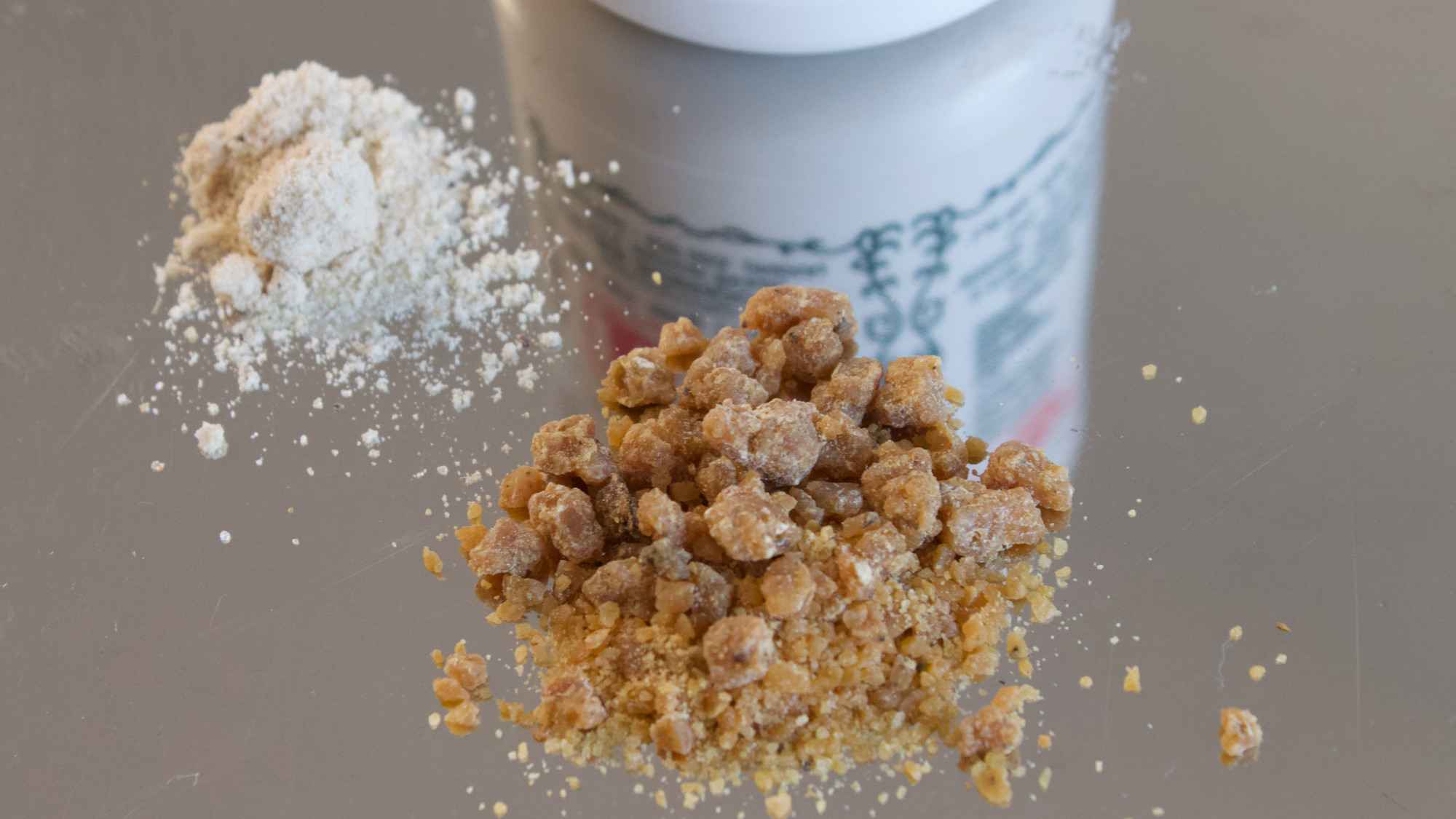
Asafoetida or hing is one of the lesser-known ingredients in this list. It's made up of dried gum extracted from the rhizome of plants from the Apiaceae or Umbelliferae family. This gum is dried and pulverized into a powder or sold in chunks.
Raw asafoetida has an extremely pungent smell and you can often find it in supermarkets with the help of your nose alone. Don't be overwhelmed by its raw smell though. A little goes a long way and when added to dishes and cooked down, the pungent flavour smoothes out and adds flavours similar to leeks, onions, shallots, chives and garlic.
Because traces of the same sulphurous flavour compounds (sulphides) are found in meat, asafoetida can also bring a meaty depth to vegetarian cooking. Given that so many Indian dishes are vegetarian, hing is that ingredient which adds an additional oomph or umami to our dishes. If you are serious about vegetarian or vegan cooking, you need to start experimenting with this stuff. The best way to incorporate it in your dishes is to add a pinch to your hot cooking oil right at the beginning and watch it sizzle, then continue cooking as you would normally. Whether it's a tadka, a masala for a curry or a bean soup, you will notice that with this magic ingredient all the spices round up wonderfully and somehow your dish tastes better than it did before.
The only thing to keep in mind, and I cannot stress it enough, is that a little goes a LONG way. Start with a pinch, or half a pinch, a couple of grains if you can measure them out, because if you go too far, it might overpower your whole dish.
Now, in addition to its magical umami inducing abilities, hing is also known to aid digestion and relieve stomach gas. It's a key ingredient in various traditional and Ayurvedic medicines for the stomach like hing goli (small balls made of hing and herbs) and churan (a mixture of powdered herbs). These traditional medicines are surprisingly popular among children in India. As kids, we loved taste of churan and hajmola so much that we would go to the lengths of faking stomach aches just to get a dose from the school nurse or our parents.
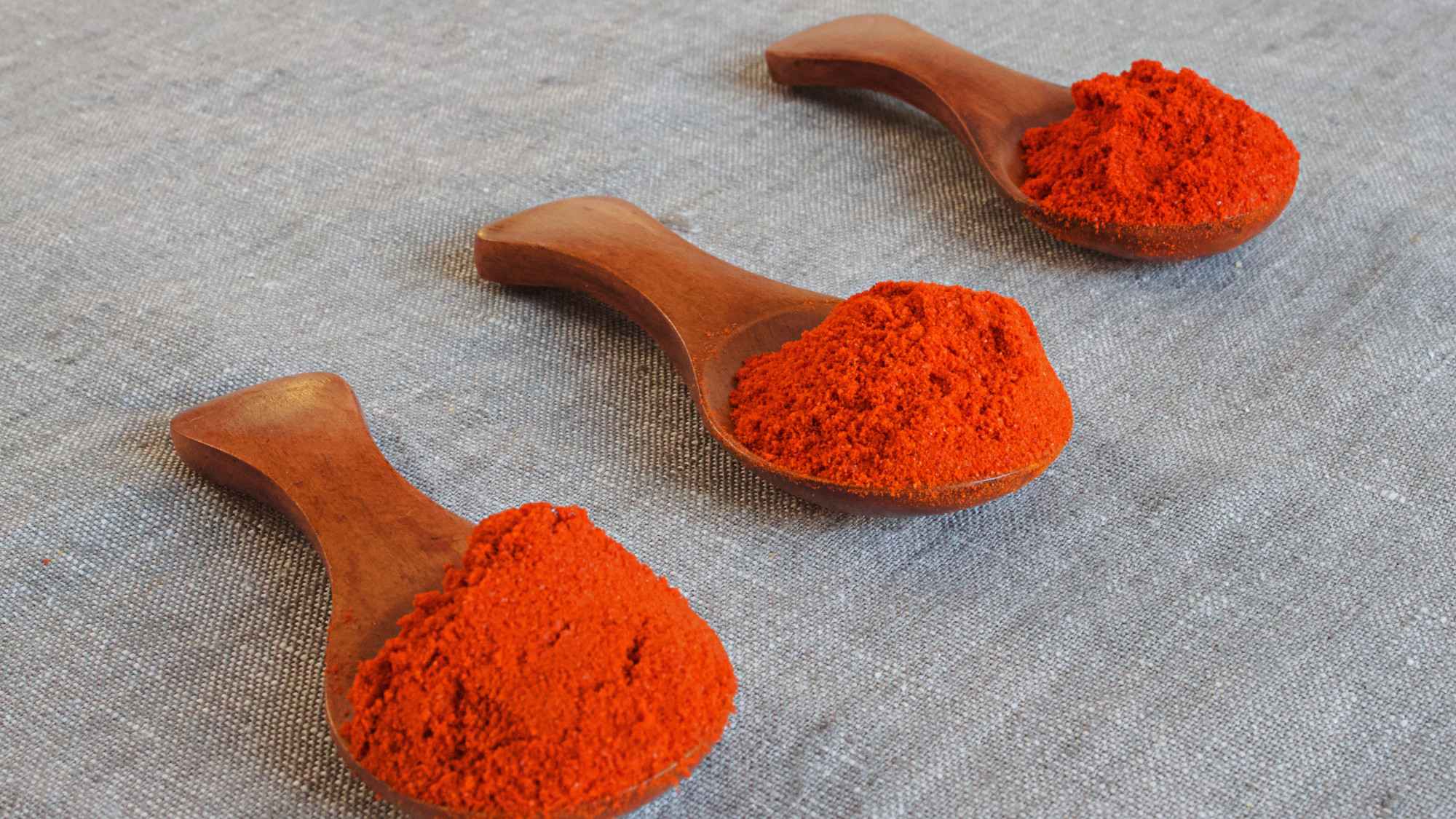
In Hindi, mirch or mirchi is how we refer to both the heat from chillies and to chillies themselves. Spice or heat is synonymous with the Indian cuisine, so it's no surprise that chilli powder is one of the pantry essentials on this list. In addition to adding heat, chilli powder plays the important role of adding a reddish orange hue to curries and other dishes. This red colour is considered appetizing in North Indian cuisine. Various tandoori dishes (Indian style bbq) use heaps of chilli powder to render the food red or orange. Many restaurants and dhabas nowadays use food colouring. If you want to keep it natural and not add too much spice to your food, Kashmiri chillies are the ones to turn to. Most Indian grocers will stock two types of chilli powder at least, deggi mirch and kashmiri mirch powder with the former having a higher heat level than the latter. If you're like me and cannot tolerate too much heat in your food then sweet paprika powder, readily available across Europe, is a good substitute for the Indian chilli powders. It adds a lovely colour to your dishes without adding in any heat. For the heat, I like to rely on fresh green chillies, but that's just my preference. So, here's your guide:
For a little heat and bright colour: kashmiri mirch
For only colour and no heat: sweet paprika powder
For both heat and colour: deggi mirch powder
For heat and no colour: Other chilli powders like cayenne etc.
For no heat and no colour: look elsewhere, we're talking about Indian food after all
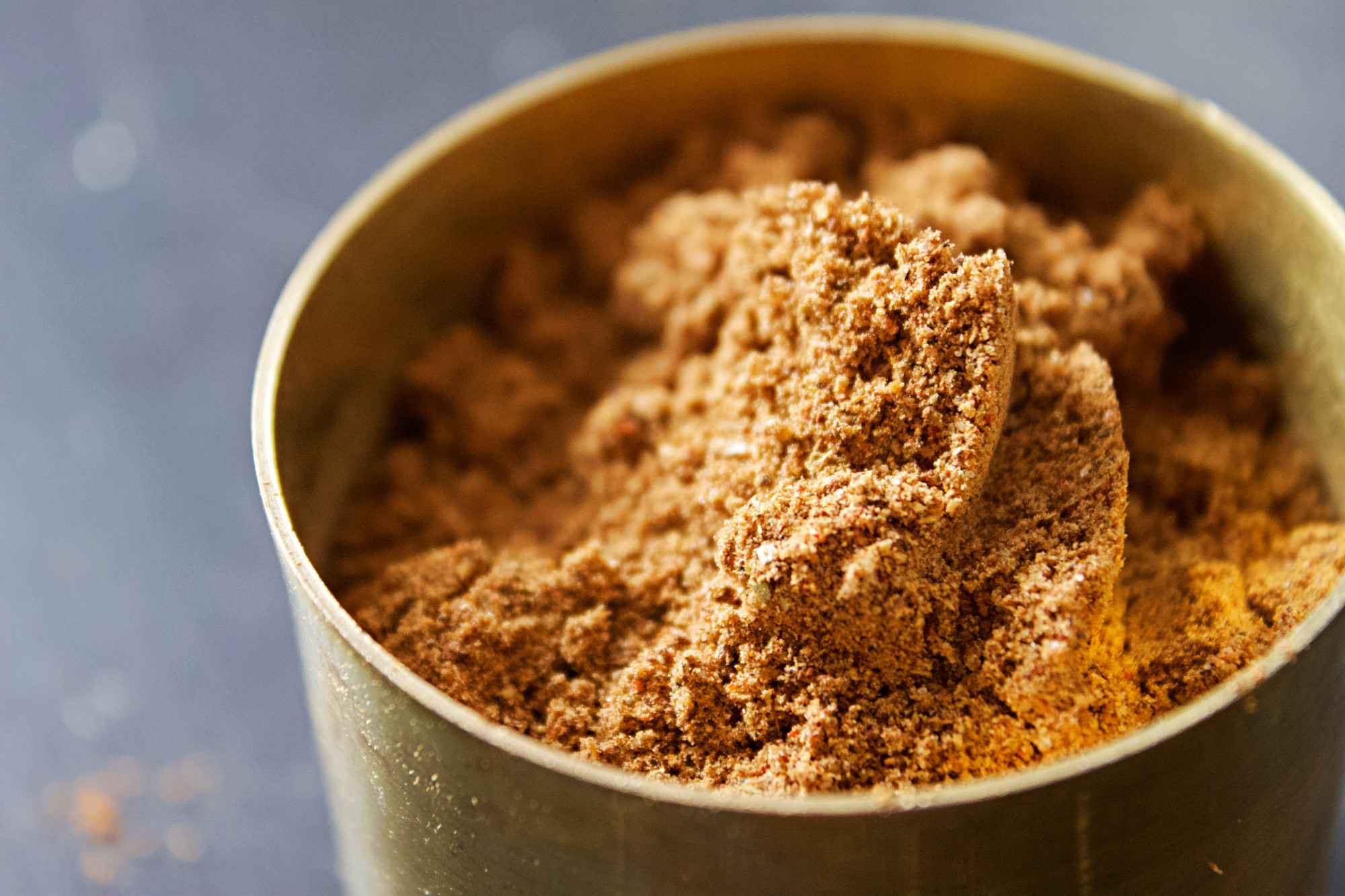
Unlike all the other spices on this list, this one is a blended spice mix.
Garam (hot) masala (spice) is one of the most important spice blends in North Indian cuisine. In Hindi, garam masala refers not only to the spice blend but also the category of whole spices in general. They are called garam because in Ayurveda they are considered to add heat to your body. So, cardamom will be a type of garam masala but is also an ingredient in the spice mix that's called 'garam masala'. Makes sense? It's confusing, I know.
Garam masala, the spice blend, usually consists of dry roasted cumin, cardamom, cinnamon, cloves, pepper, mace, bay leaves, and the list goes on. In India, people often store spices in whole form and make small batches of garam masala at home – either in a mortar and pestle or a blender – in order to have a fresh batch at hand when cooking. Most households have their own recipes for garam masala passed down from generations like a well-kept family secret, and ingredients too vary from household to household.
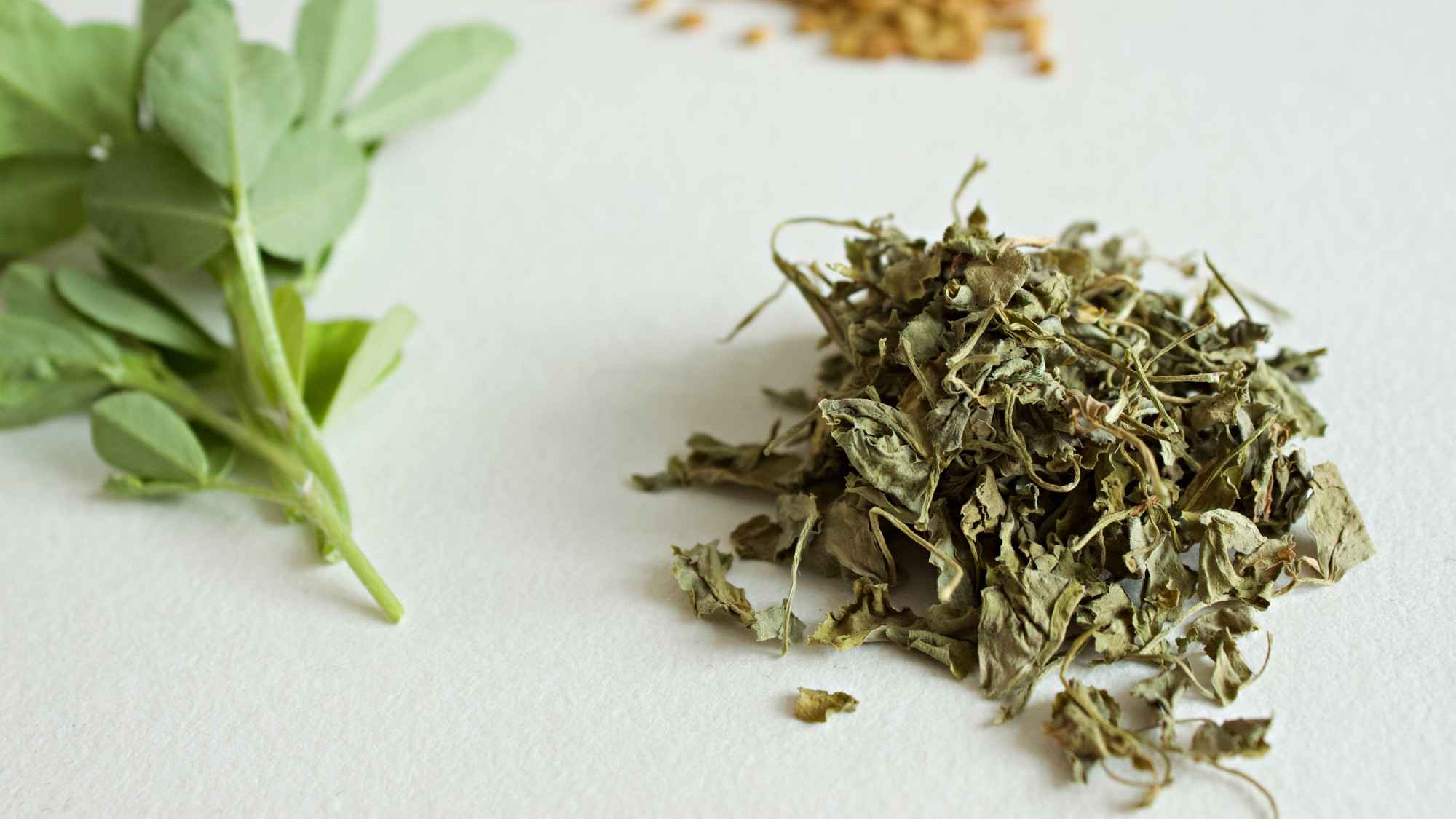
Dried fenugreek leaves or kasoori methi play an important role in flavouring North Indian food. They are often added to curries and tadkas. If you have ever enjoyed butter chicken or paneer makhani in a restaurant, there was certainly some kasoori methi in there. Technically, they are a herb and not a spice, and belong to Fabaceae or the legume, pea and bean family.
We are mainly talking about the dried leaves here but please note that in Indian cuisine, we use fresh fenugreek greens in our cooking and fenugreek seeds are used as a spice (more on that below). Fenugreek leaves and seeds are bitter which is why they are used in relatively small quantities.
Kasoori methi leaves can be added to curries directly or dry roasted briefly to enhance their sweet earthy aroma and then crushed into dishes before serving them. They pair very well with tomato-based curries and potato dishes. In addition to curries, vegetable dishes and dal, kasoori methi is an essential ingredient in Punjabi flatbreads like paranthas and kulcha.
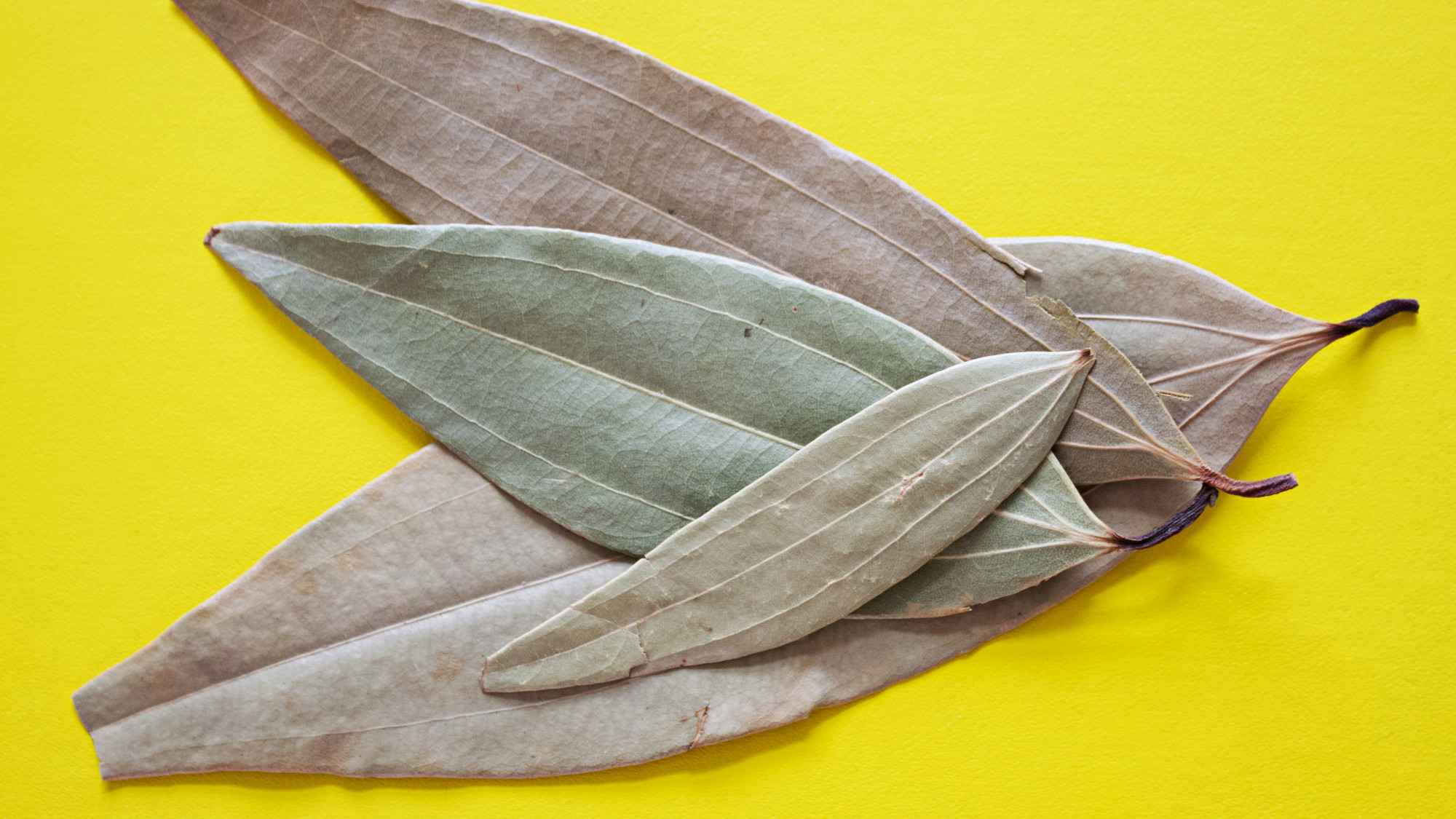
Indian Bay Leaves or tej patta are very different from the bay leaves used in European cooking which are from the laurel family and known as Lorbeerblatt in German. Indian bay leaves grow on trees from the Cassia family and are noticeably larger when compared to laurel leaves.
Tej patta when added to dishes add a cinamonny-nutty aroma to them. They are often added to rice dishes like pulao and biryani in North Indian cuisine.
Do note that if you're not able to get your hands on tej patta, bay leaves as you know them aren't really a good substitute to use. So, I would recommend omitting them rather than using laurel leaves instead.
Green cardamom or choti elaichi (small cardamom) like its bigger cousin, belongs to the Zingiberaceae or ginger family. Cardamom pods are the seed pods of the plant. In Indian cooking, the pods are often added whole to dishes or ground into a powder. Green cardamom has a strong, sweet, pungent aroma and is often added to both sweet and savoury Indian dishes. It's also one of the key spices added to masala chai in India. My parents sometimes chew on a pod or two to use them as a natural mouth freshener and digestive aid. Something that I personally find a little too strong.
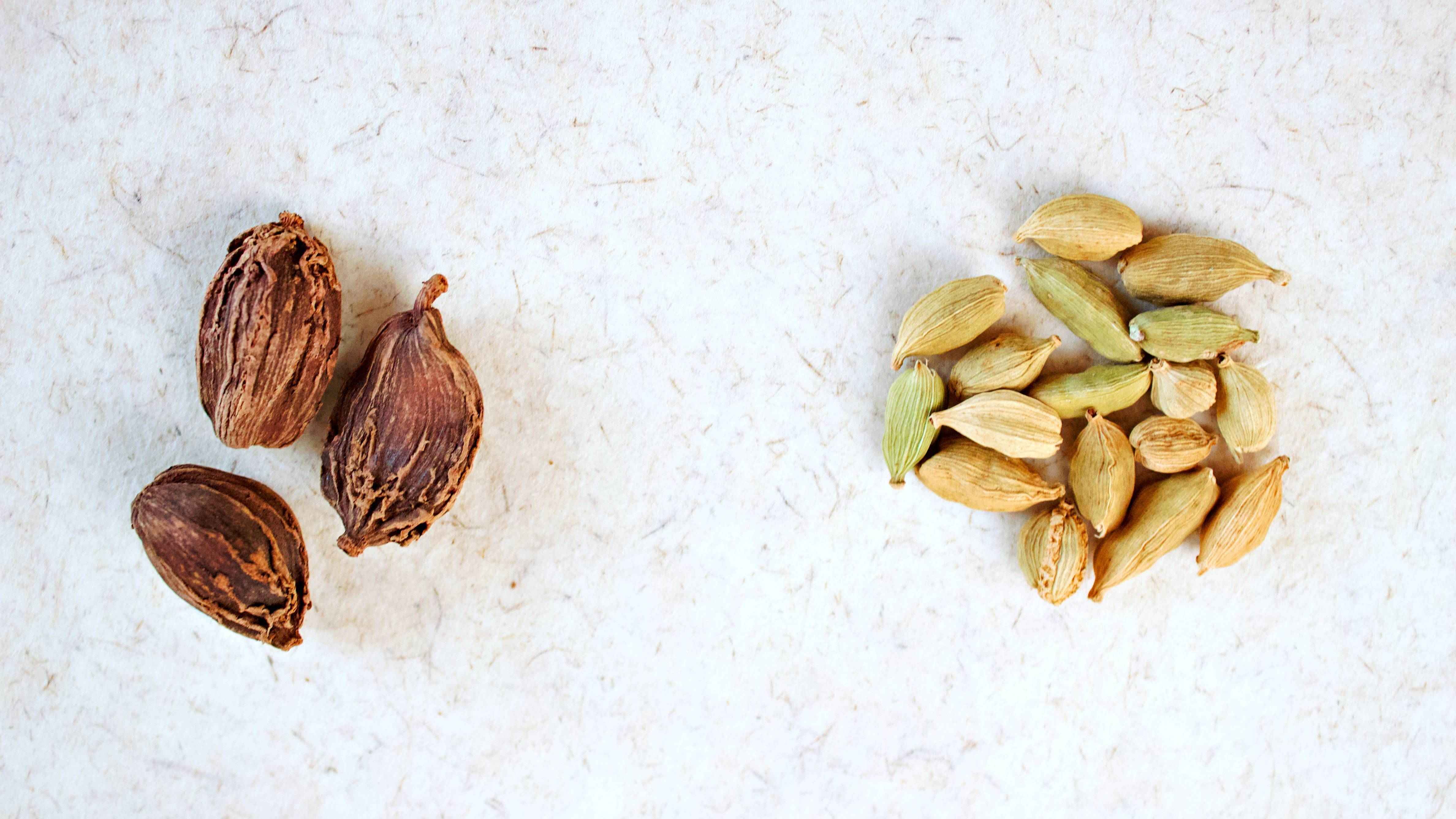
Black cardamom or badi elaichi (big cardamom) is probably not as common as the smaller green variety but is quite essential to North Indian cooking. Black cardamom pods are much larger than the green cardamom that you might already know (thus the Hindi name). Unlike its green cousin, black cardamom is a warming spice with a distinct smoky flavour and is thus used mainly in savoury dishes. It pairs very well with meat dishes, beans and chickpeas and is a key ingredient in garam masala.
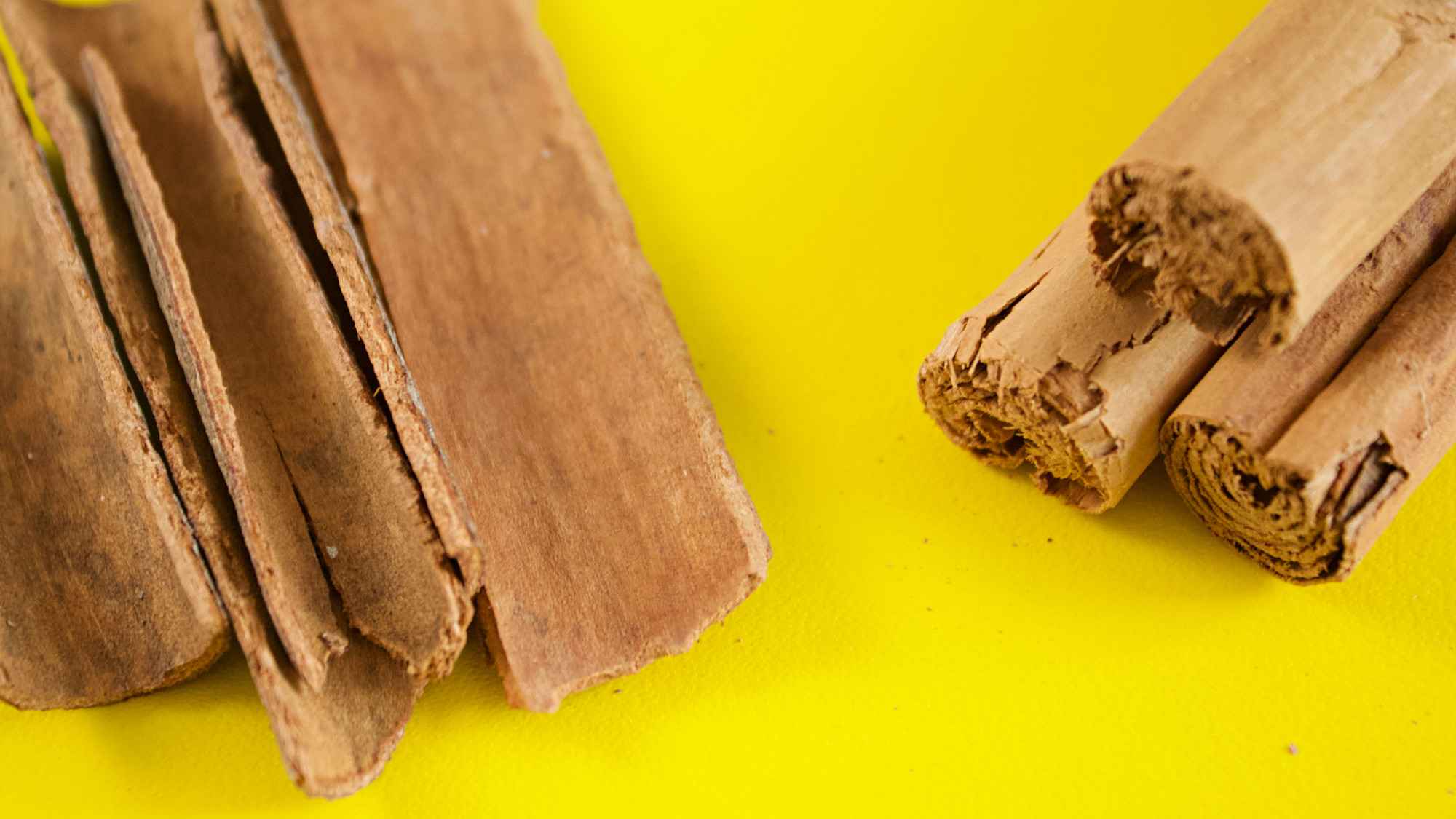
Cinnamon or dal chini (dal sugar) is believed to be one of the oldest spices known to mankind and after salt and sugar probably one of the most commonly used seasonings in Europe. However, what we often refer to as cinnamon in India is actually not true cinnamon at all, it’s the bark of the cassia tree that grows along hills of Kerala and the Malabar Coast in India. Thus, often referred to as Kerala or Malabar cinnamon, or in India often as just cinnamon. True cinnamon on the other hand comes from the neighbouring Sri Lanka, thus often referred to as Ceylon cinnamon. Both cassia and cinnamon belong to the same Cinnamomum family, but to different branches of the family tree.
Thus, to avoid confusion, I will refer to the cinnamon that we use in North Indian cuisine as dal chini hereon.
Dal chini is used more for savoury dishes rather than sweet treats. Indian desserts are rather flavoured with spices like saffron or green cardamom. Dal chini is reserved more for rice pulaos, biryani and curry and is often added to the dishes whole. Dal chini has a sweet and slightly minty flavour and is milder than true cinnamon.
You can optically tell the difference between dal chini and true cinnamon. Dal chini is a harder, thicker bark which is fairly tough to break by hand, whereas true cinnamon is often formed up of flaky rolls of bark that are more brittle.
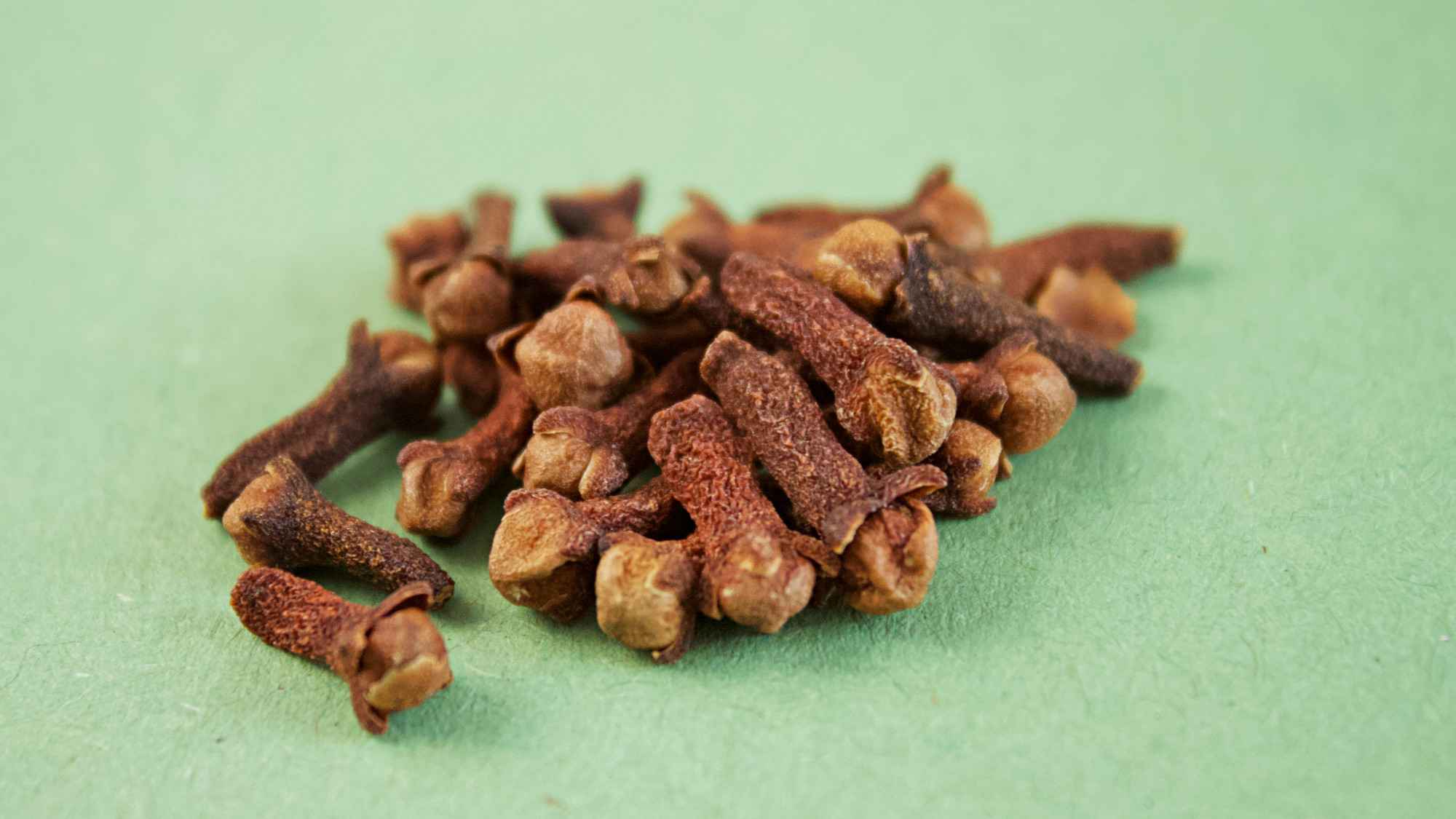
Cloves or laung are the flower buds of a tree in the family Myrtaceae.In Indian cooking, cloves are often added to meat dishes, curries, and rice. Cloves are also an essential ingredient in garam masala. Aside from adding warmth and their distinct spicy aroma to dishes, cloves are also used in traditional medicine and for aromatherapy. Cloves contain eugenol which has natural anaesthetic and anti-inflammatory properties and is thus used to reduce pain, e.g. toothaches. In India, cloves are synonymous with dental care and you can find many commercial toothpastes infused or flavoured with cloves.
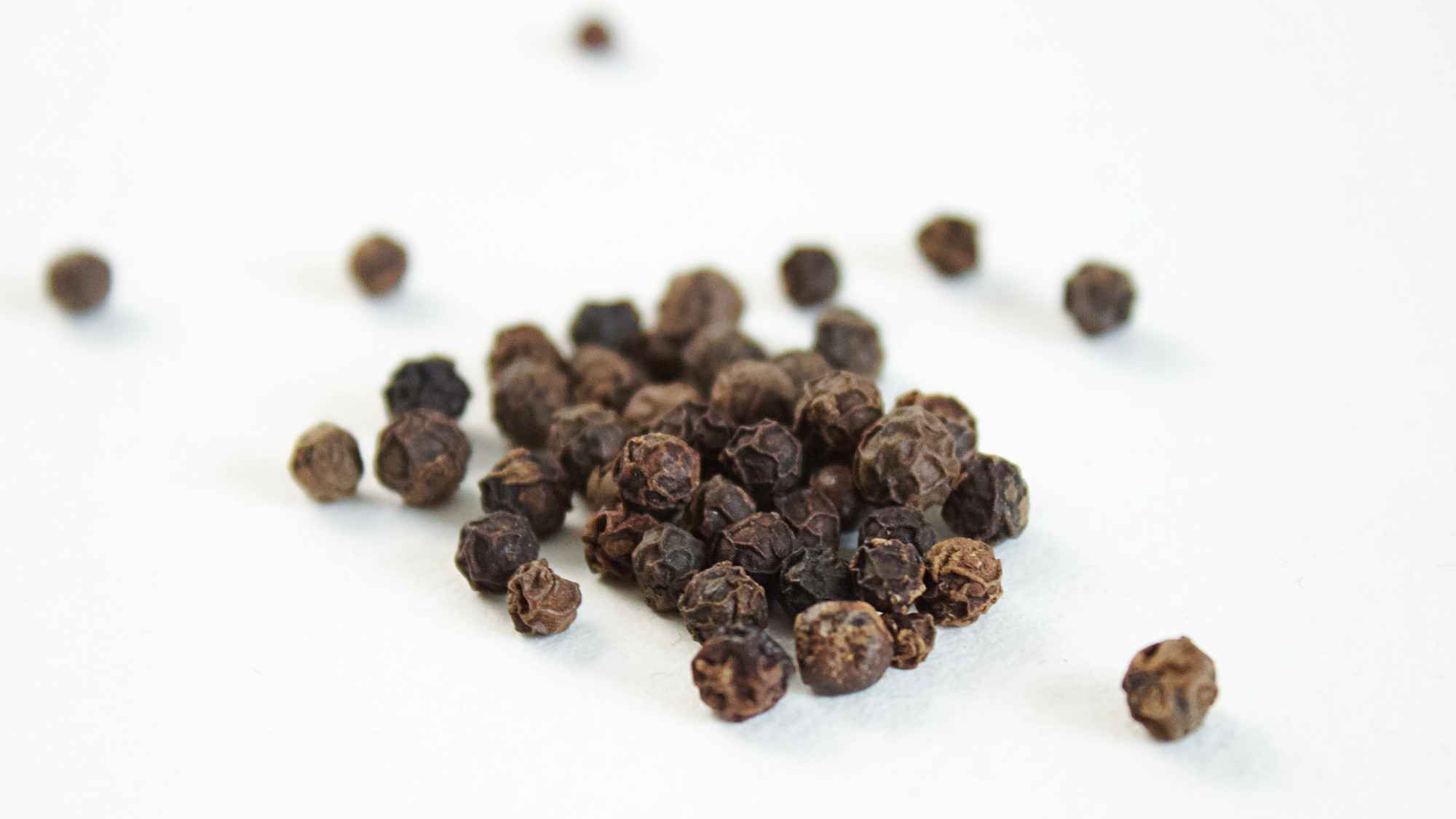
Black pepper or kali mirch is native to Kerala in South India. Black pepper is the world's most traded spice and is one of the most common spices added to cuisines around the world. Different from chillies and peppers which lend their spiciness to capsaicin, peppers are spice due to the presence of piperine.
In addition to adding their peppery flavour to Indian curries and sitting next to saltshakers, pepper also plays an important role in traditional medicine.
Carom seeds or ajwain is another member of the Apiaceae family. It looks a little bit like aniseed or anise but has a different flavour with notes of oregano and thyme. Most importantly, in North Indian cuisine, ajwain is used to flavour flatbreads like paranthas. Ajwain is also added to chickpea batter for frying pakoras, to tadkas to flavour vegetable and lentil dishes and to various savoury snacks and baked items. Like cumin seeds, in India, ajwain is also often added to hot water and consumed as a tonic for digestive health and many other perceived benefits.
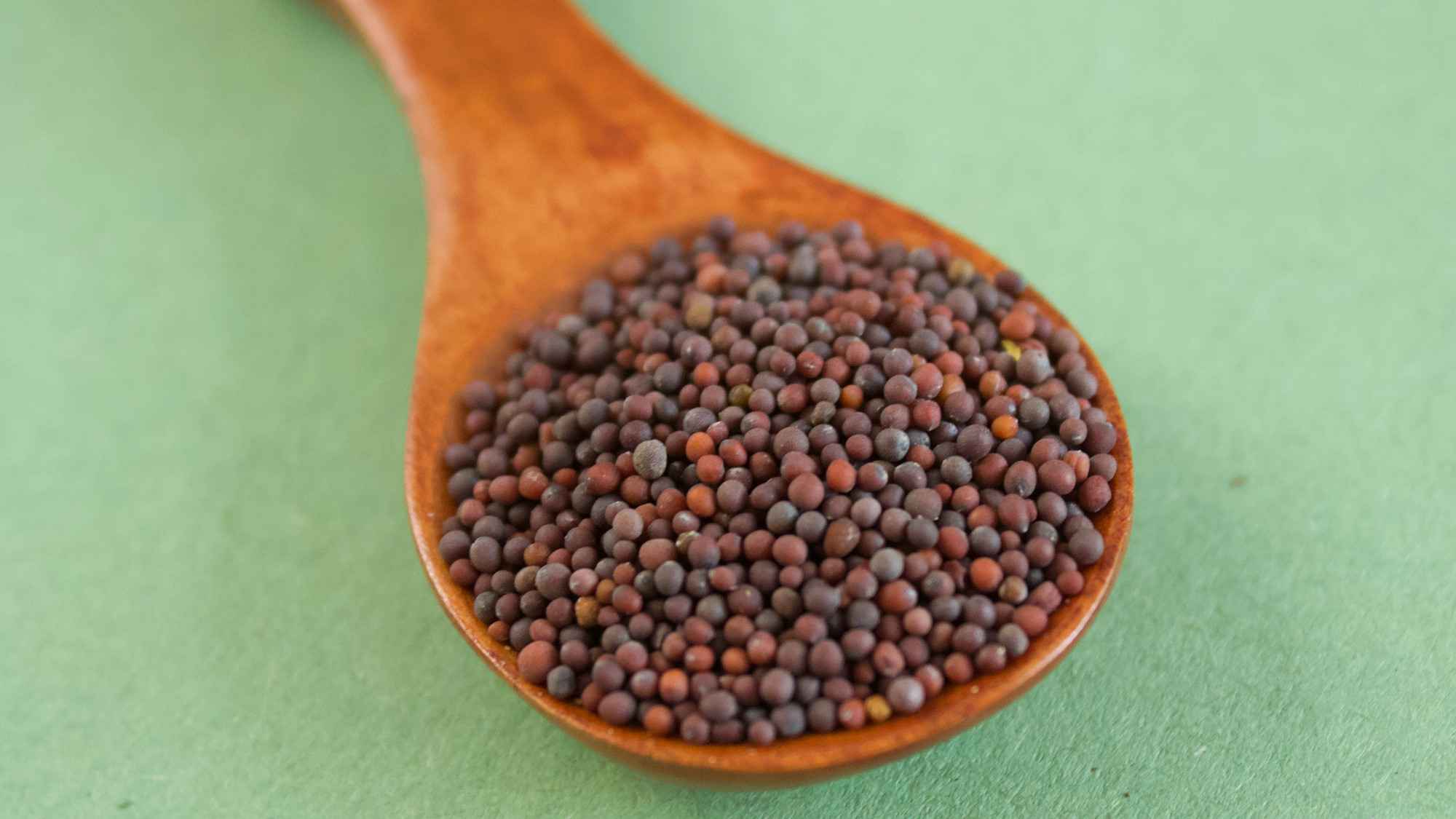
Mustard or sarson/rai plays an important role in the Indian kitchen, from mustard oil which is the most popular cooking oil across the country, mustard greens which are a seasonal favourite among Punjabis, consumed as sarson ka saag with makki di roti or corn flatbread. However, here we're talking about mustard seeds or rai. This is something you must have in your kitchen if you are planning to cook any cuisine from Southern India. It's used to flavour vegetable dishes, added to tadkas for curries and chutneys and much more. Mustard seeds, like cumin, are almost always added to hot oil at the beginning of the cooking processes. You must wait for them to pop and crackle before you proceed with adding your other ingredients. Otherwise, they will turn your dish bitter. You can also soak these mustard seeds in water to make a homemade mustard paste, a seasoning that forms the base of various Bengali dishes. In Punjabi cuisine, we often used mustard seeds in pickles and achaars. It also forms the base of one of my favourite traditional Indian fermented drinks - kanji.
Nutmeg or jaiphal come from a tropical evergreen tree that produces not only nutmeg but also mace (more on that below). It has a woody yet sweet flavour that works well both with sweet and savoury dishes. In Indian cuisine, it is mainly added to spice blends like garam masala and is also used in some sweet dishes like halvas, burfis and puddings.
It’s a potent spice and a little goes a long way. A few strokes over our trusty microplane grater usually go a long way, so use sparingly.
It's great to have at hand not only for Indian dishes but also for baked preparations like carrot cake, ginger cookies or other winter desserts. It’s also the secret ingredient that elevates our béchamel sauce and gives our spinach puree or rahm spinat its je ne sais quoi distinct quality. In general, it pairs very well with creamy sauces and thus also makes an appearance in haldi doodh a hot turmeric spiced milk or in eggnog.
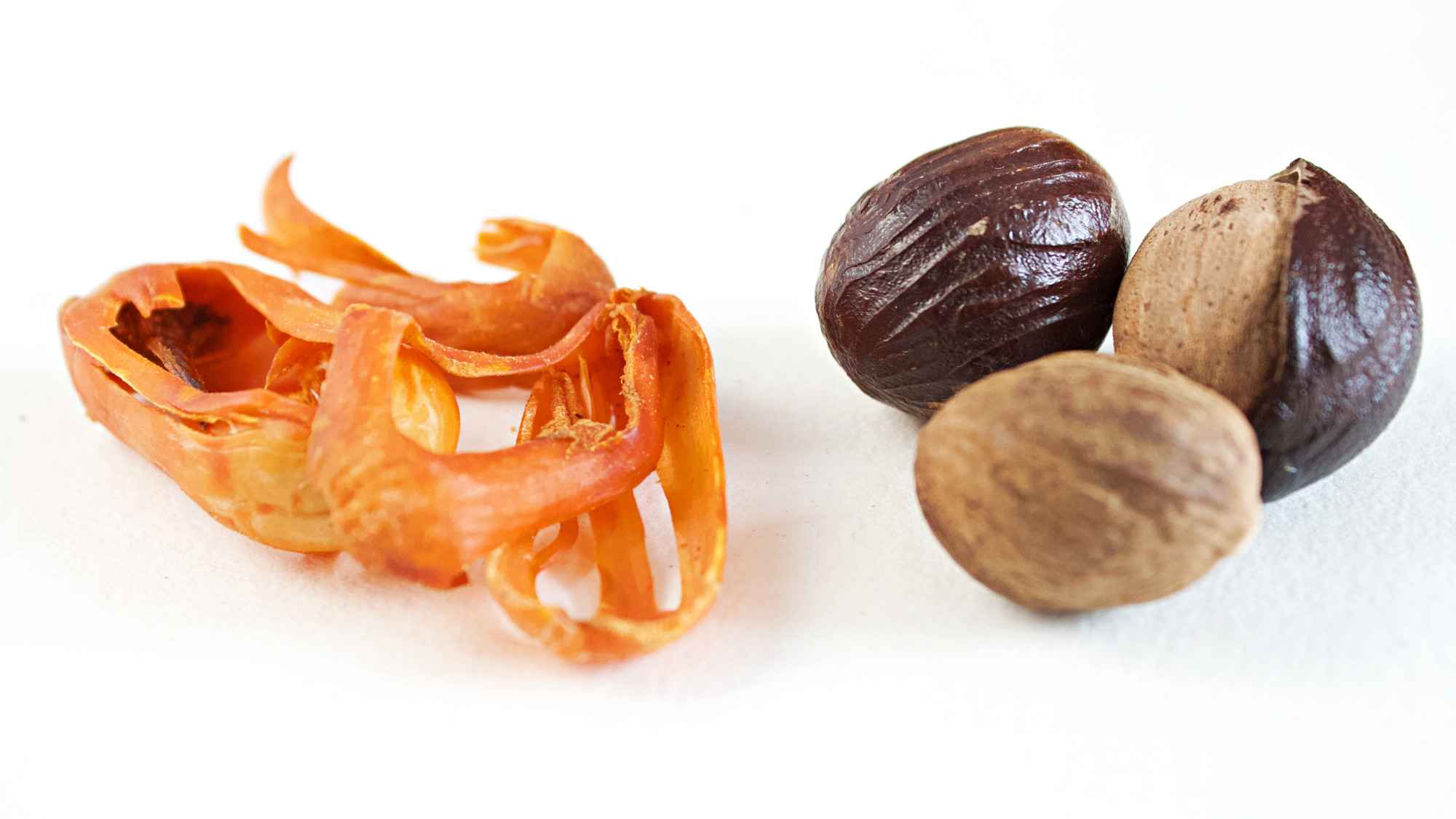
Mace or javitri is a spice added to garam masala and other spice blends for special dishes. It's great to flavour rice and is often added to biryanis and pulaos. Javitri is the outer covering of the nutmeg seed and – though from the same tree – has a very different flavour from that of nutmeg. It is sweet yet pungent and thus only needs to be used in small quantities. In addition to Indian recipes, mace also features Moroccan and Caribbean cuisines in spice blends like ras-el-hanout. Like nutmeg, mace too is great in both savoury and sweet dishes. Not only can it be added to soups, stews, and curries, it can also be paired with fruits in cakes, tarts, and cobblers.
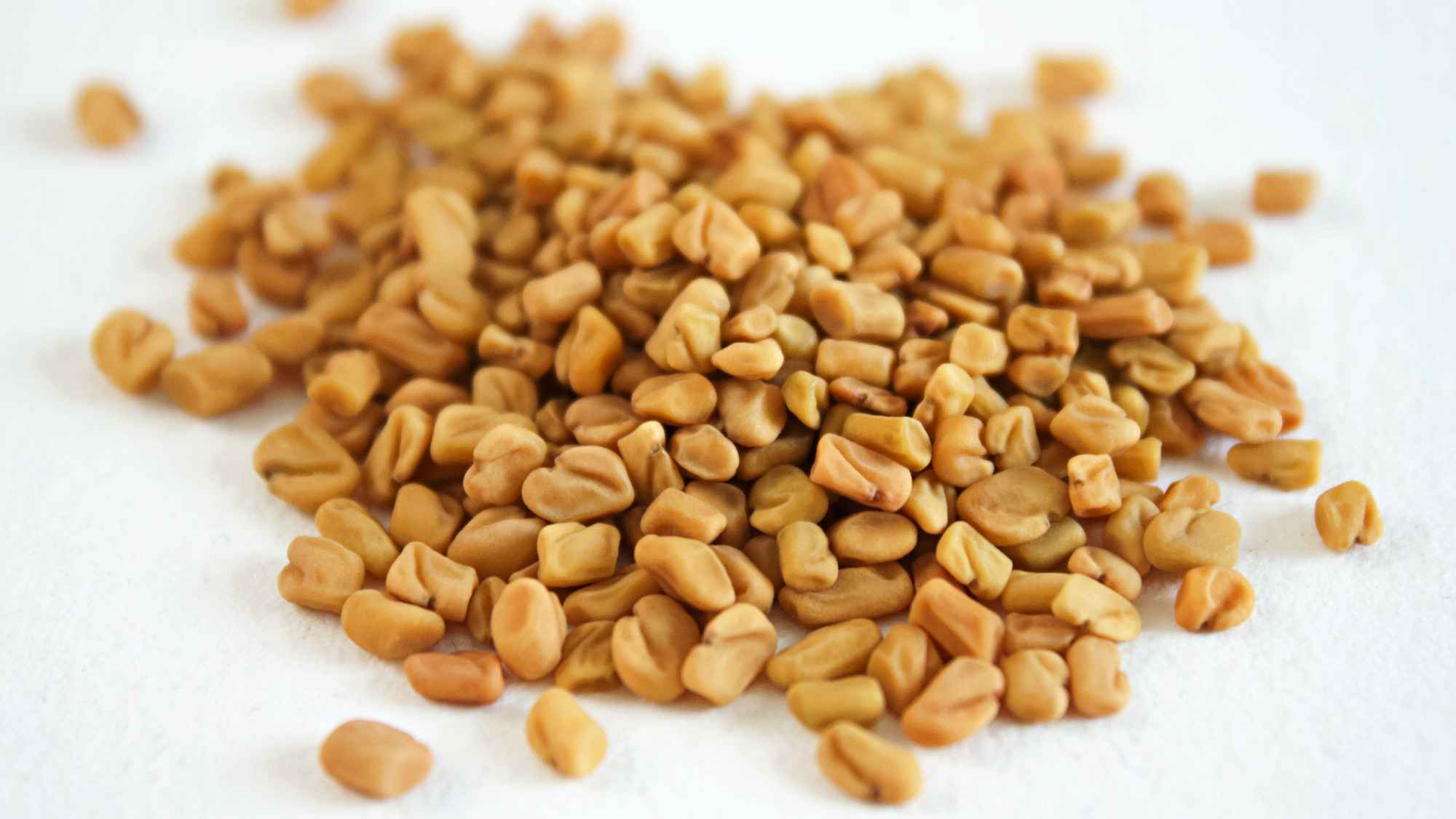
Fenugreek seeds or methi dana add a savoury bittersweet aroma to dishes. They are often used as a spice to temper dals, curries and vegetable dishes.
They have a strong bitter taste with hints of caramel and coffee. They are one of the key ingredients in the popular East Indian five-spice blend, panch phoran. They are also a key ingredient in idli and dosa batter.
In addition to their culinary uses, fenugreek seeds are used in traditional medicine and are known to be a digestive aid and are used in Ayurvedic medicine for hair loss and skin complications.
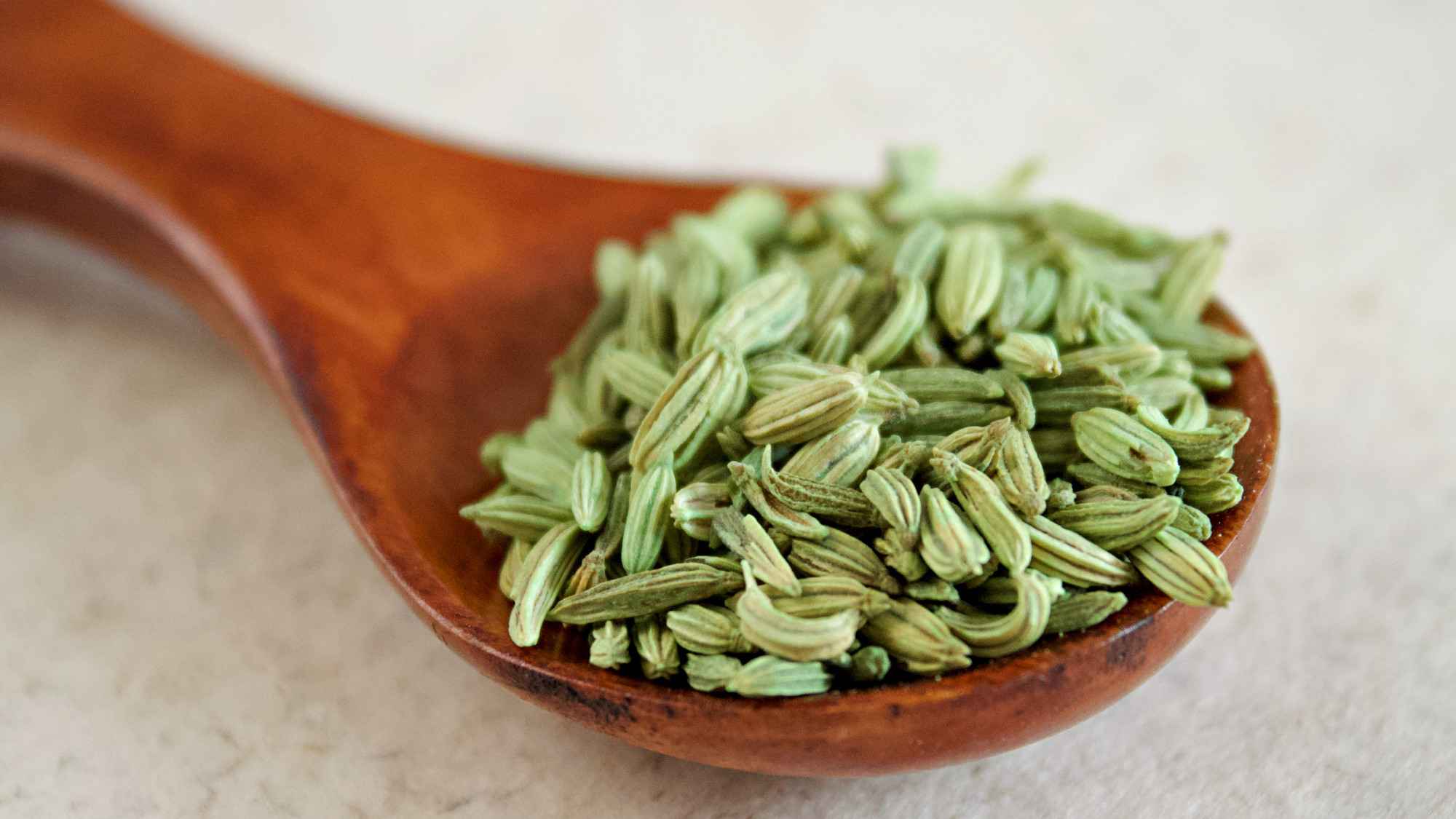
Fennel or saunf is another member of the Apiaceae family. Fennel seeds aren't used as often as cumin seeds, but they too are added to tadkas and are used to flavour certain sweet and savoury Indian dishes. Fennel is also roasted and powdered to be added to dishes. In Punjabi cuisine, they also make an appearance in achaars or pickles. However, the most popular use of fennel seeds nationwide in India has to be as a mouth freshener. Most restaurants either have a bowl at their cash counter or bring you a portion when they bring you the bill. The seeds are chewed on for the refreshing minty taste and can often also be found in stores in sugar-coated versions or mixed with other herbs.
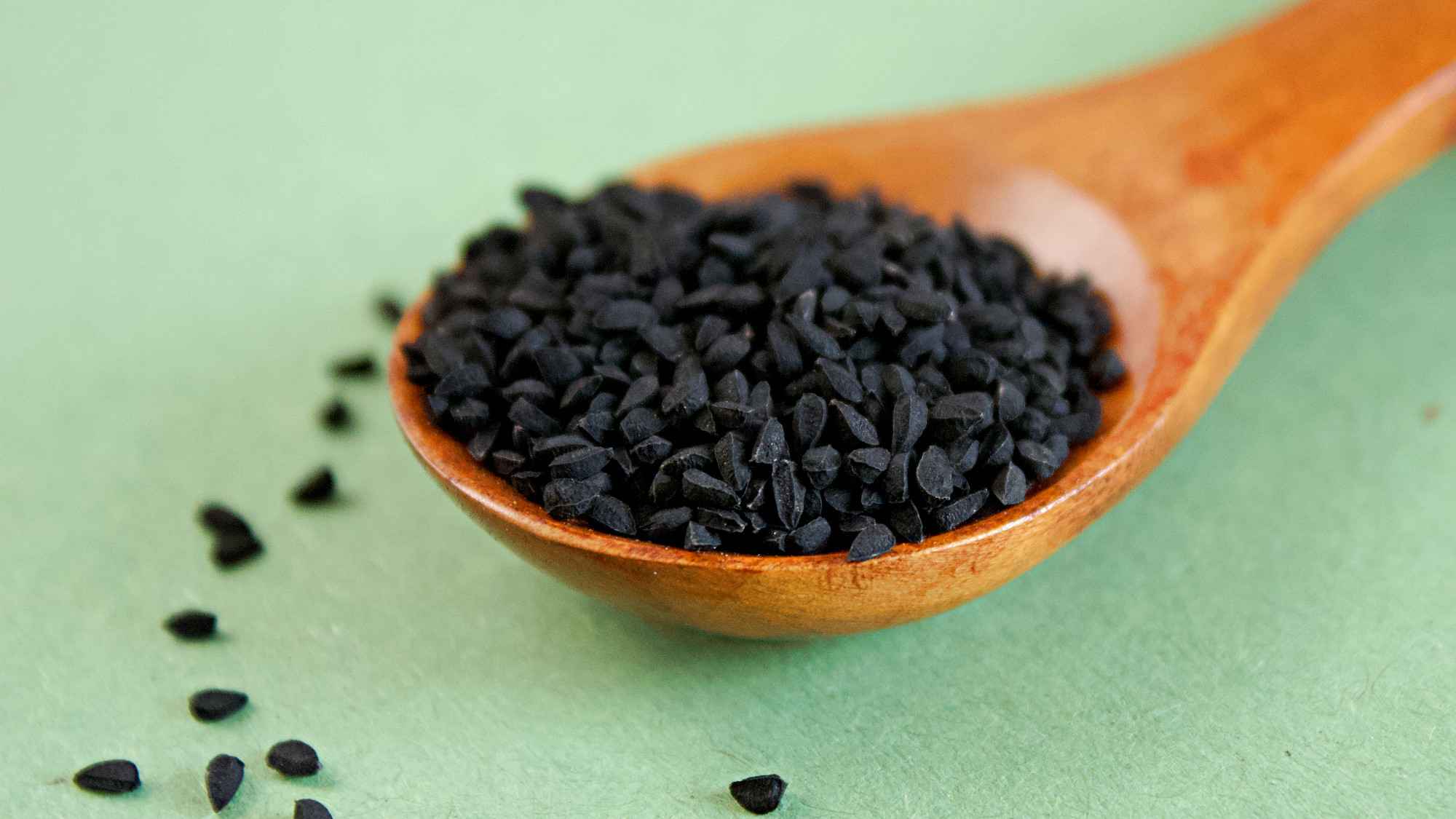
Nigella seeds or kalongi are seeds of a herbaceous plant from the buttercup family. They have an onion-like and peppery flavour and are used across India in savoury dishes and baked preparations. They are often used in naans and breads or added to tadkas, curries and vegetable dishes. Nigella seeds are one of the ingredients in panch phoran, a popular East-Indian five spice blend. Additionally, their preservative properties make them a popular ingredient in pickles and chutneys.
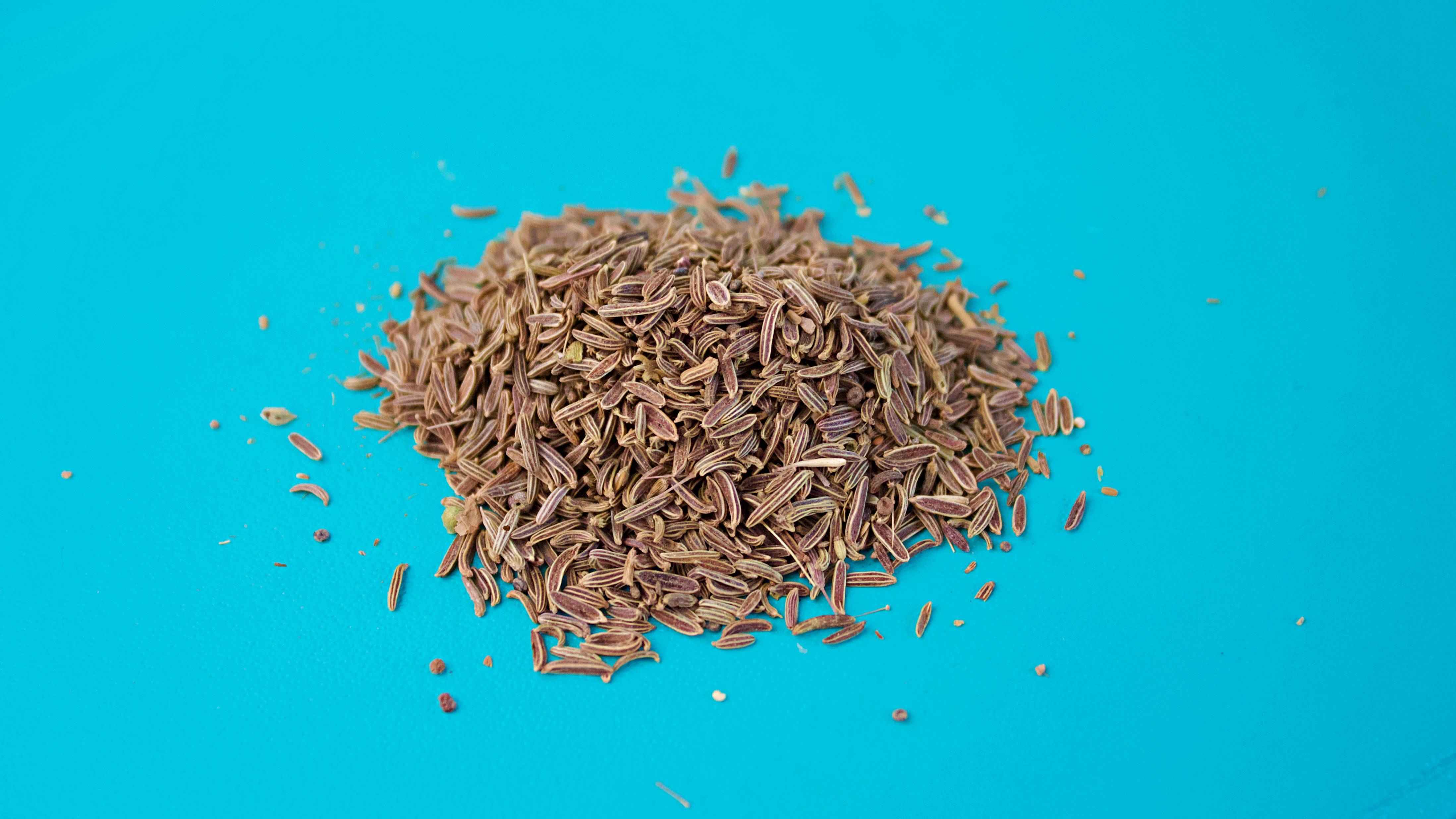
Black cumin seeds or kala/shahi jeera is one of the key ingredients for our garam masala. It's also added to other spice blends for meat dishes. It's much milder than regular cumin and has notes of cinnamon and anise. Not to be confused with kalongi, which is also referred to as kala jeera.
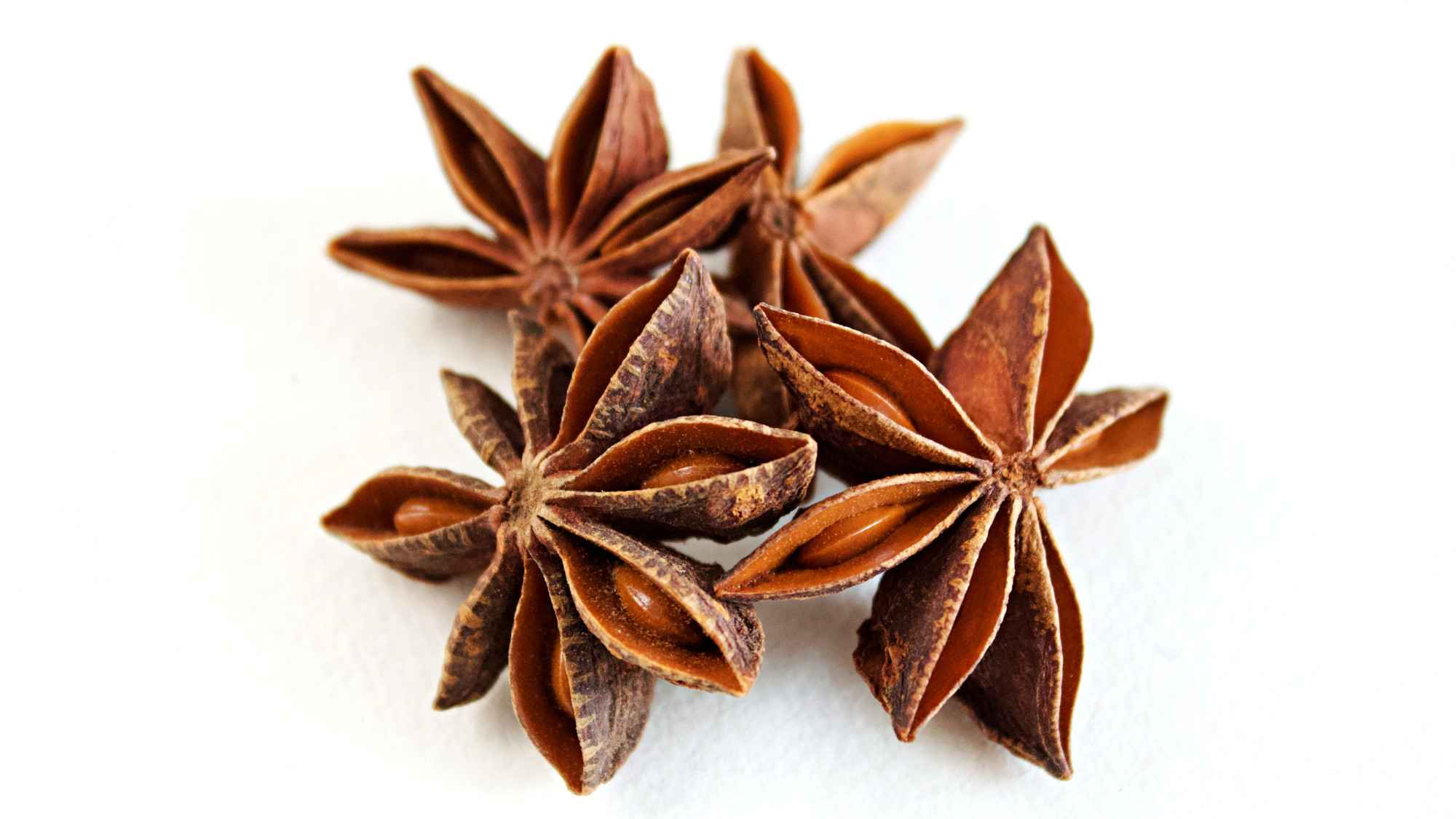
Star anise or chakra phool is native to China and Vietnam and is the fruit of a small evergreen tree. The spice has a distinct sweet flavour similar to anise, fennel and liquorice. It’s often used that's added to flavour curries like kurma and rice dishes like biryani. Star anise is also an important ingredient in garam masala and vindaloo spice blends.
In addition to Indian cooking, if you have star anise in your pantry you can use it to make Chinese five-spice powder, or to flavour the popular Vietnamese noodle soup phở or to make glühwein.
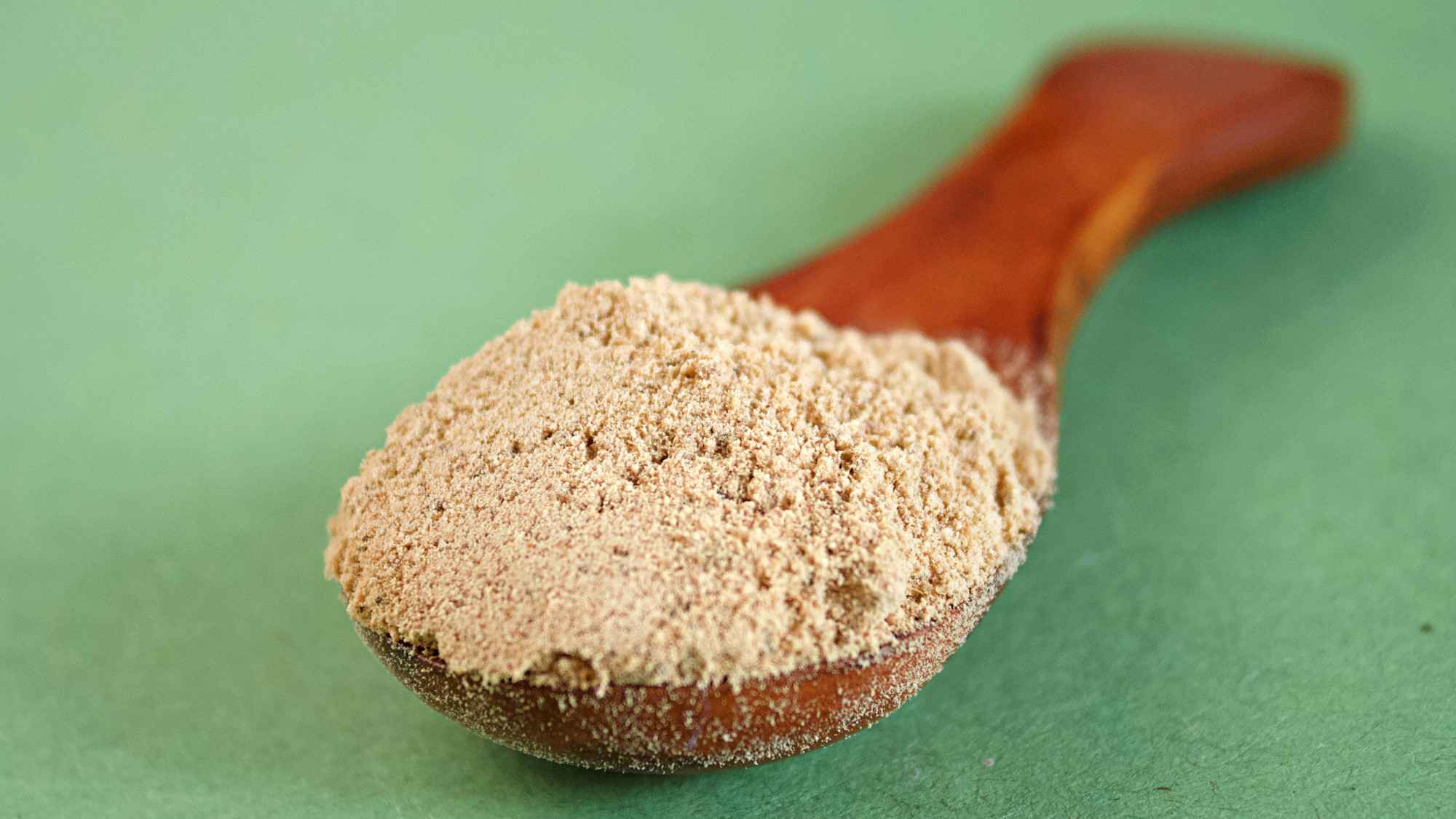
Dried mango powder or amchoor is made from dried and powdered raw mangoes. Raw or green mangoes are sour and are used to add tang to Indian dishes in both fresh and dried form. During mango season, green raw mangoes show up in the market before their much-awaited ripe cousins. These unripe mangoes are used to make pickles like aam ka achaar, summer drinks like aam ka panna and added to curries and dals. Unlike Indian food here in Europe, in India, we don't actually use ripe mangoes for cooking. So, curries that feature mangoes are usually prepared with the sour raw variety and not sweet ripe mangoes.
Amchoor preserves the tang of fresh green mangoes in its dry form to be used all year round. Amchoor is added to street food dishes and chaats known to hit the sweet, sour, spicy, and savoury notes all at once and is a key ingredient in the spice mix - chaat masala. It's often added to mashed potatoes that make up the masala for samosas, parathas and many other dishes.

Black salt known as kala namak in India is kiln-fired rock salt, with a sulphurous, pungent smell. A rather unusual ingredient for the rest of the world, in North India, this is a household essential. However, those who are not accustomed to the taste often tend to hate it and associate it with the smell of rotten eggs (rightfully, due to its sulphur content).
In India, kala namak is a key ingredient in chaat masala which is a popular spice blend used in many chaats or street food dishes. It's also added to salads, yoghurt raitas, sprinkled onto fruit or added to lemonade and chaach (Indian version of ayran or a salty lassi).
Kala namak is also used in Ayurveda and traditional medicine for various perceived medical qualities.
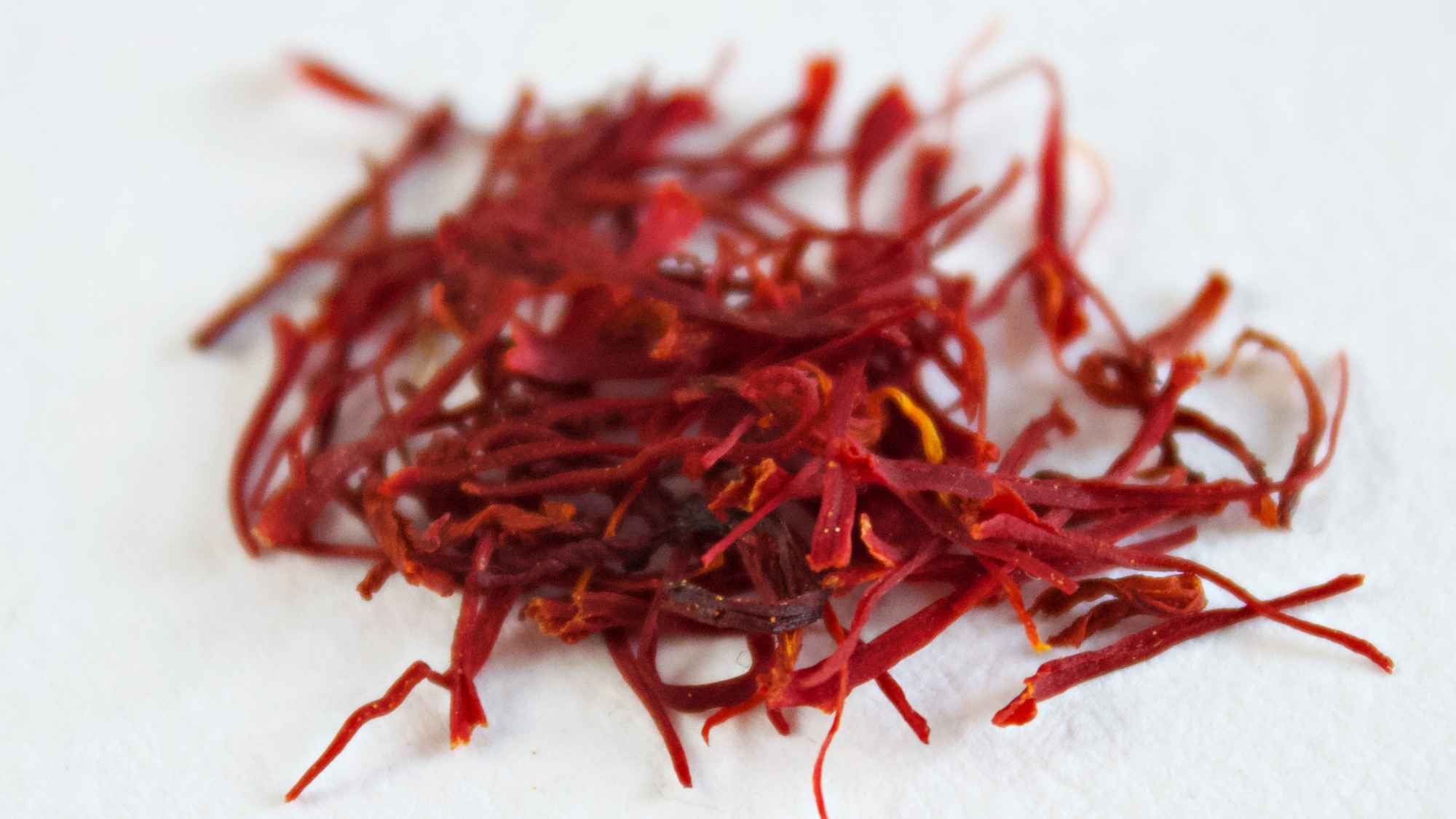
Saffron or kesar is commonly used in both sweet and savoury dishes in North Indian cuisine. This delicate and sought-after ingredient, like many other whole spices, made its way to the Indian subcontinent through the Persians. Saffron is most commonly used in desserts but is also added to certain special savoury delights, especially rice dishes like biryani.